
It's a sad truth that some of the most fascinating things to see in Cambodia, besides Angor Wat, revolve around the genocide in the 70s by the Khmer Rouge. While I was in Cambodia, I read some books by ordinary Cambodians, who told the story of their forced relocation into the countryside and the attempted extermination of the upper classes. The Khmer tried to replicate Mao's Cultural Revolution, and like every other dictatorship it eventually failed, but not before millions had lost their lives.
Nicki and I had been renting scooters throughout Southeast Asia. On the morning we went to to get a scooter in Phnom Penh to go out to Choeung Ek Extermination Camp, I had a funny feeling about driving. Nevertheless, we went to the scooter rental shop. They wouldn't rent me a scooter because I didn't have my passport. Then, while a foreigner was leaving, she stopped beside me and shook her head and said, 'good luck.' I took these signals as a sign that we shouldn't rent a bike. I'm glad that we didn't because it was over an hour's drive weaving through ox-carts, horses, people, touts, hawkers, dogs, garbage heaps, buses, trucks, dirt and dust - and not one traffic light!
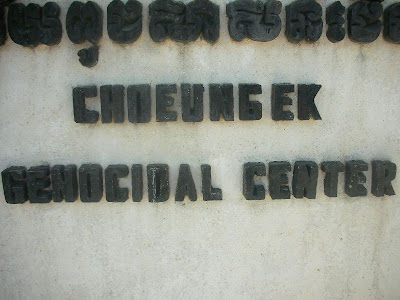
_______________________________________________


____________________________________________________________
The legacy of genocide that the Pol Pot regime left behind - their prisons, extermination camps and killing fields - have now been transformed into mass tourist attractions. One of these sites is the Choeung Ek Extermination Camp, which was first unearthed by the Vietnamese after their liberation of the Cambodians in 1979. It lies just 15 km southwest of Phnom Penh, and preserves the remains of some 9,000 victims.
Upon arriving at the longhan orchard with its green fields and silver-tipped trees blowing gently in the wind, I found it hard to believe that so many horrors could have taken place amongst so much beauty. A dirt path winds around the site, with information about each gravesite written across crude wooden plaques. These grassy mounds, around 129 of them, have now all been excavated and marked with the numbers and the sex of those unearthed, and the condition in which they were found.
Prisoners from Tuol Sleng Detention Camp were transported to Choeng Ek by truck, and upon arrival were either detained in wooden shacks that were constructed from wood with galvanized steel roofs and darkened to prevent prisoners from seeing each other, or else immediately executed and then thrown into mass graves. Chemicals were then thrown overtop to dissolve the bodies.
Another path through the fields takes you to a large stupa, a Buddhist shrine that has been built to commemorate and hold the preserved remains of those that were killed. Beaten and misshapen skulls peer out from behind thick panes of glass, expressions of surprise and horror still etched on their mummified faces. Propped up against the inside walls of the stupa are the leg and arm bones that once belonged to them.
I was very moved by Choeung Ek Extermination Camp, and although I felt conflicted by paying to see something so tragic, it's a place that should be visited in order to remember and respect the people who suffered and died there.
_________________________________________________

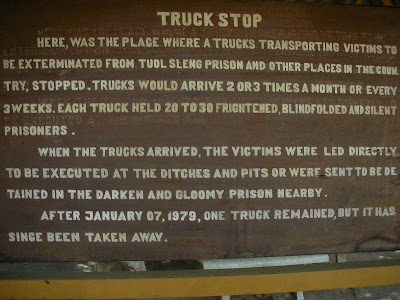
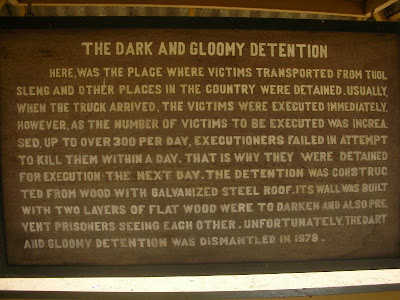
________________________________________________
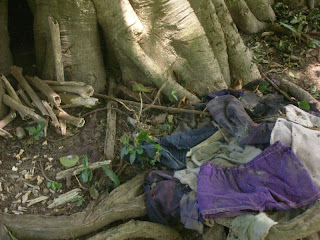

_______________________________________________
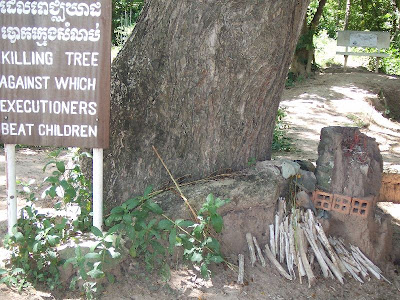
_______________________________________________
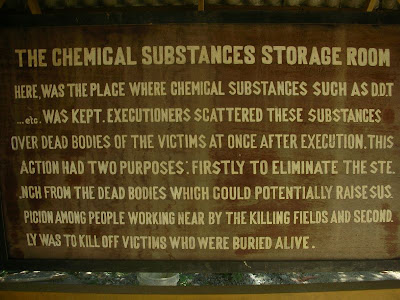
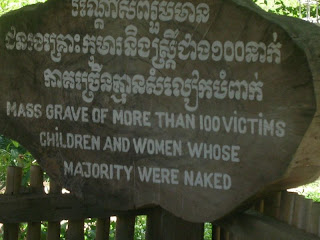


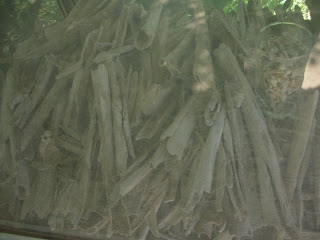

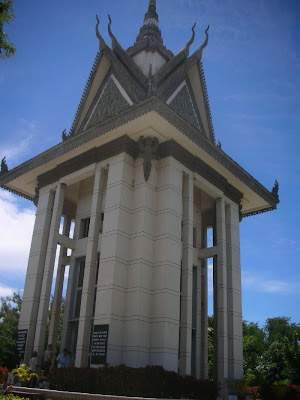
No comments:
Post a Comment